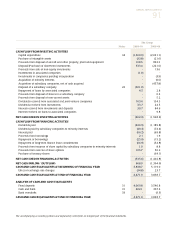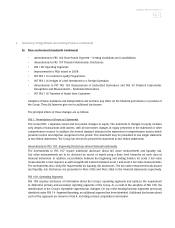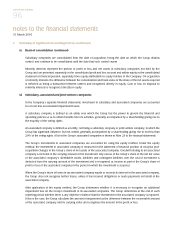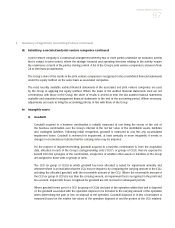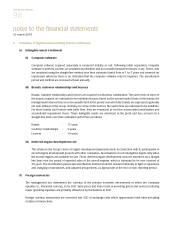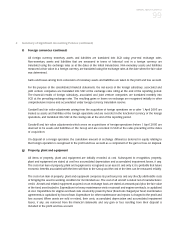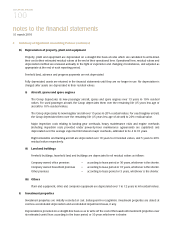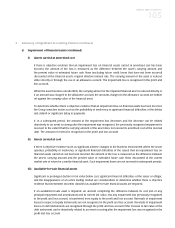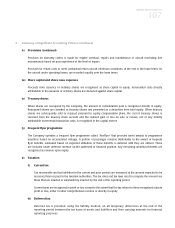Singapore Airlines 2010 Annual Report Download - page 100
Download and view the complete annual report
Please find page 100 of the 2010 Singapore Airlines annual report below. You can navigate through the pages in the report by either clicking on the pages listed below, or by using the keyword search tool below to find specific information within the annual report.SINGAPORE AIRLINES
98
notes to the financial statements
31 march 2010
2 Summary of Significant Accounting Policies (continued)
(e) Intangible assets (continued)
(ii) Computer software
Computer software acquired separately is measured initially at cost. Following initial acquisition, computer
software is stated at cost less accumulated amortisation and accumulated impairment losses, if any. These costs
are amortised using the straight-line method over their estimated useful lives of 1 to 5 years and assessed for
impairment whenever there is an indication that the computer software may be impaired. The amortisation
period and method are reviewed at least annually.
(iii) Brands, customer relationships and licences
Brands, customer relationships and licences are acquired in a business combination. The useful lives of some of
the brands acquired are estimated to be indefinite because based on the current market share of the brands, the
management believes there is no foreseeable limit to the period over which the brands are expected to generate
net cash inflows for the Group. Similarly, for some of the licences, the useful lives are estimated to be indefinite.
For those brands and licences with finite lives, they are measured at cost less accumulated amortisation and
accumulated impairment losses. These intangible assets are amortised in the profit and loss account on a
straight-line basis over their estimated useful lives as follows:
Brands - 17 years
Customer relationships - 5 years
Licences - 14 years
(iv) Deferred engine development cost
This relates to the Group’s share of engine development payments made in connection with its participation in
aircraft engine development projects with other companies. Amortisation of such intangibles begins only when
the aircraft engines are available for sale. These deferred engine development costs are amortised on a straight
line basis over the period of expected sales of the aircraft engines, which is estimated to be over a period of
20 years. The amortisation period and amortisation method would be reviewed annually in light of experience
and changing circumstances, and adjusted prospectively, as appropriate at the end of each reporting period.
(f) Foreign currencies
The management has determined the currency of the primary economic environment in which the Company
operates i.e., functional currency, to be SGD. Sales prices and major costs of providing goods and services including
major operating expenses are primarily influenced by fluctuations in SGD.
Foreign currency transactions are converted into SGD at exchange rates which approximate bank rates prevailing
at dates of transactions.





